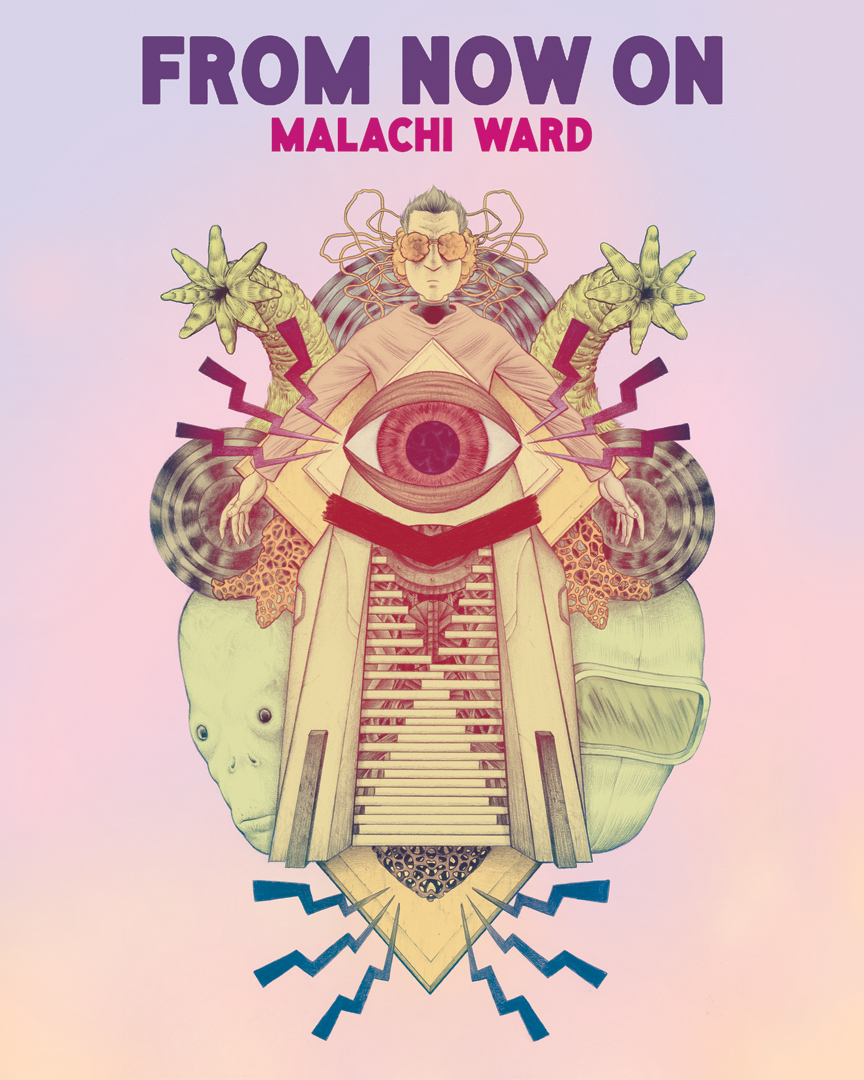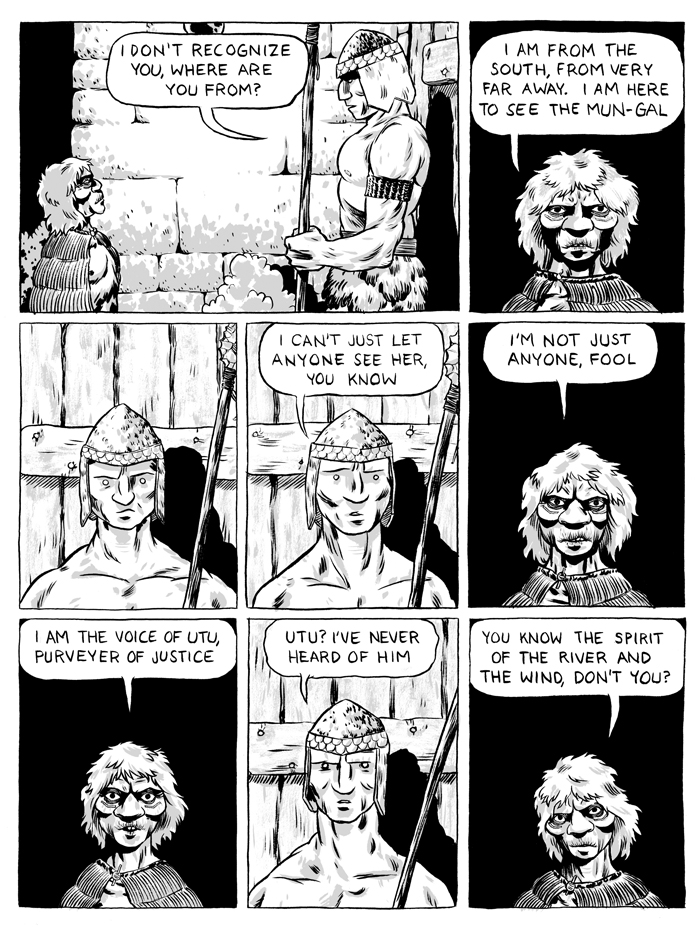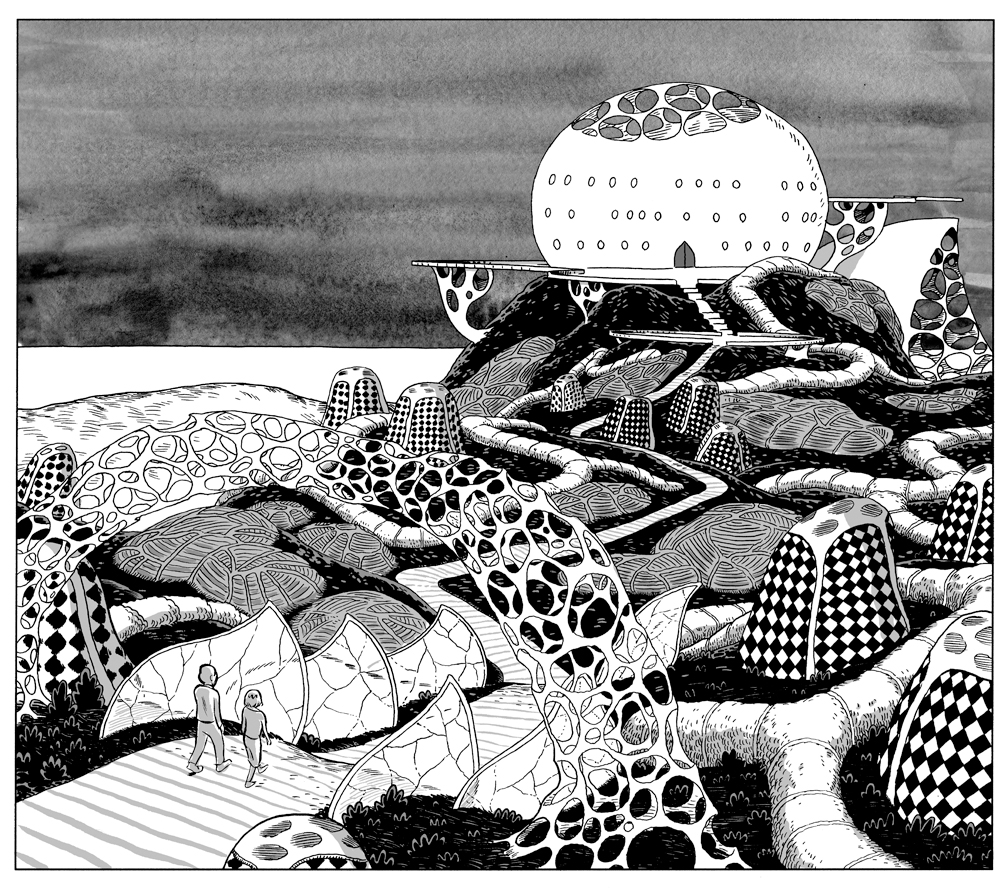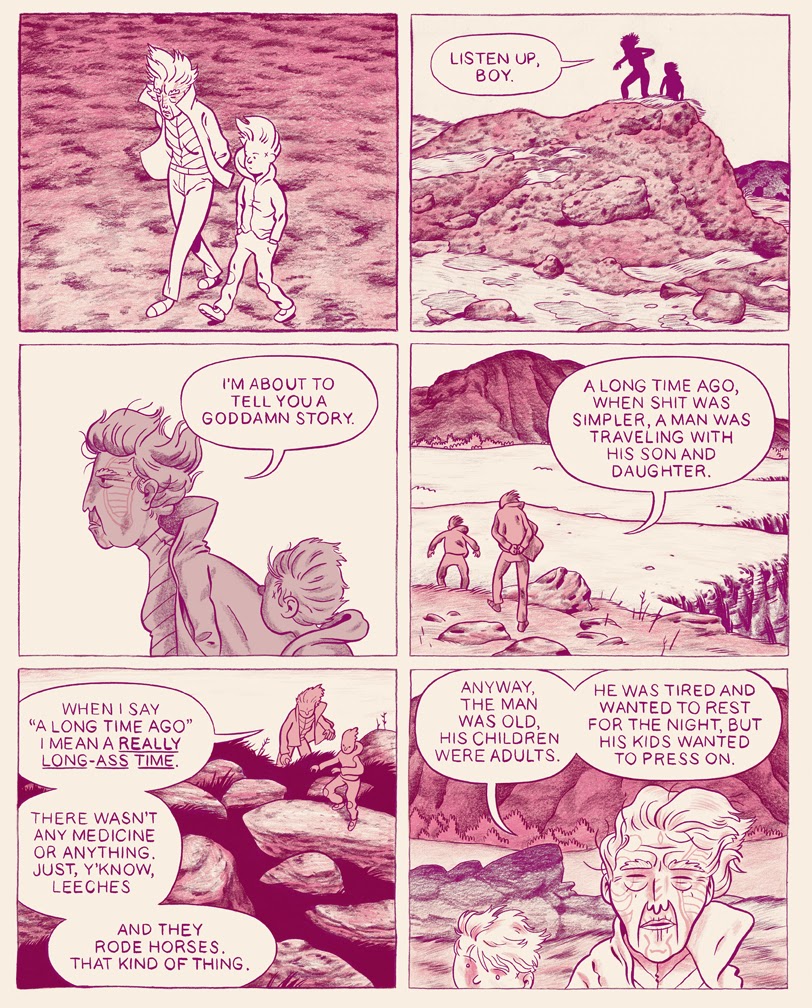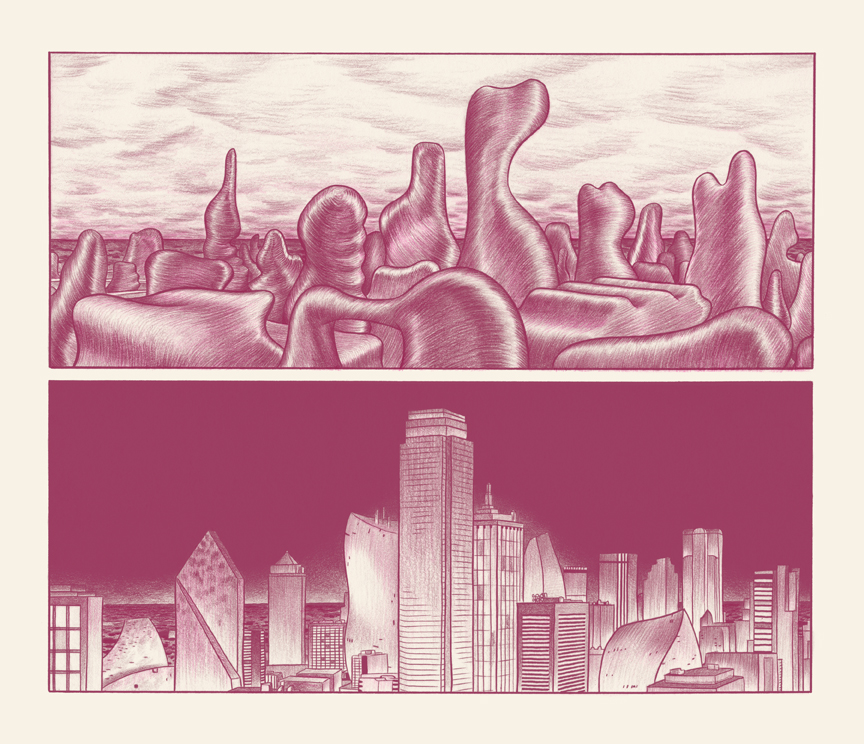Malachi Ward is the creator of Ritual, a series published by Revival House Press, and the author of From Now On, a collection of short stories which is coming in June from Alternative Comics. He also collaborated with Matt Sheean at the series Expansion and at some issues of Brandon Graham’s Prophet. The interview that follows took place at the end of May via e-mail.
Since you talked about your formation as a comic artist and your inspirations in this interview with Dave Nuss, I’d like to begin this chat with some questions about From Now On. This is your first “book” and I think it would be nice to introduce it to the readers. I saw the summary and the very first story will be Utu, a sort of classic in your production, in fact it’s one of the first comics or exactly the first comic you printed. Do you think that self-publishing Utu in 2009 could be considered as a key moment in your career?
After college I was reading a lot more comics, and flirting with the idea of making them. Of course, “comics” can be almost anything, and I didn’t have much of an idea about what I wanted to do. My art at the time was kind of… whimsical I suppose? Anyway, throughout 2007-09 I kind of honed in on what I wanted to do. I started Utu in 2009, and traded off working on that and The Scout, for Jordan Shiveley’s Hive anthology. I finished them both in time for APE 2009. So both were a big breakthrough for me. It was the first work that I finished and was ok printing up and presenting to the world. I still kinda like those stories too.
I think Utu is a really original story, because it starts in a way and then moves in a completely different direction. And it has a lot of different registers, in the beginning it seems a sort of mythological tale, then it becomes funny and in the end it’s also sad in some way. I’d like to know if you started it with the intention to use different atmospheres and genres, or if the plot came out as a natural process.
One of the appeals to me of Utu was that bifurcation in the plot – that it feels like it’s one kind of story and then quickly becomes a totally different one. I’m not really into plot “twists”, but who doesn’t like a story surprising them, so long as it all fits? I’m drawn to that narrative device a lot… It’s something I often try to insert into a story, even if it doesn’t work! Each of the Ritual stories kind of has an element of that to varying degrees.
Before you mentioned The Scout, another story from 2009 that will be in From Now On, where you examined the concepts of time and repetition. This comic is based on a fixed grid of six panels per page and, watching your old things, you used a rigid structure several times. On the other hand, your recent work is based on a less regular layout. Do you think this could reflect your improvements as a cartoonist or it’s only a coincidence?
For The Scout, I was concerned with telling the story in as few pages as possible (since it was for an anthology with limited space) while still making it read naturally and not seem too compressed. I think keeping a regular panel layout like the one in The Scout helps with that. I did the same thing for another story in From Now On called Henix for similar reasons. I also think that the 6-panel layout just works well for a 5.5″x8″ mini-comic. While I certainly think I’ve progressed in my comics skills, I would still return to a rigid panel layout like that if it suited the comic. Even when my comics have a lot of varying panel sizes and arrangements, they usually follow regular tier breakdowns that I don’t deviate from.
Another comic in From Now On is Top Five, a sort of metanarrative sci-fi story about Star Trek, definitely an inspiration for you. Sweet Dreams and The Oviraptor are also reinterpretations of some science fiction stereotypes. I think this is what makes your comics fresh and original, that you use some ideas taken from sci-fi movies and tv series but you treat them in your own way, creating a mix that isn’t so widespread in the world of alternative comics at the moment…
Sometimes, for me, a story starts with me thinking about how I might handle a genre trope. I think the goal is to find the core of whatever that idea is, the emotional element that clicks, the thematic or atmospheric qualities that could register with the reader, and then to work out from there while avoiding all the typical pratfalls a science fiction/fantasy/horror story can fall into.
Besides the ones we talked until now, I haven’t read the other stories in From Now On. Can you introduce them or some of them to the readers?
There’s a new full color comic called Disconnect (a preview page below, editor’s note), which takes place in the same world as Top Five, The Oviraptor, and Hero of Science. It follows one of the other characters that disappeared when the team jumped back in time. Some other stories include Beasts of Kay-7, which is sort of my take on a Star Trek type of a team that is exploring a new planet inhabited by mysterious monsters. Henix, which I mentioned earlier, is a high-fantasy kind of a story about a deformed (to the eyes of the main characters) prisoner with secrets about the royal family.
Let’s talk about Ritual now, the series published by Revival House Press, where every issue is a stand-alone story of 20-30 pages. Before picking up Ritual #2 – The Reverie, I had seen your work only online and when I read that story I was shocked… It was fucking good! Then I read others of your comics and I noticed that The Reverie is probably the most “serious” and touching comic you’ve made until now. And unlike the other issues of Ritual, this one follows a very linear narrative. I’d like to know how you came to tell this story, if it moves from your fears or from some nightmare you had.
Because The Reverie centers around a family death, it certainly contains a lot more emotionally potent situations than in my other work. Something like the death of a family member is frequently used as a cheap motivation for a main character, so I tried to be careful to imbue the build up and fallout from that event with as much empathy as possible. The idea for the story came from my fascination with the range of behavior a single person is capable of, and how opportunity shapes our ability to act in a moral way. It also deals with some notions of regret – I’ve heard people talk about what they should’ve done with their lives, or how they think things should’ve gone. It’s always been a profoundly alien feeling to me, something I have trouble understanding. It’s an idea that I’ll very likely explore with more depth in the future.
In The Reverie your drawing style seems less controlled and defined than usual. This is not a bad thing to me, because I think in some sequences you did a beautiful work depicting the landscapes or the rage of the main character. I think maybe you were doing some experimentation…
The first half of that comic, I think, is still pretty controlled. Everything that takes place outside of the titular dimension is inked with a brush and pretty carefully drawn. I actually didn’t have much time while I was working on the book, and most of the second half was drawn over the course of a couple weeks. I knew that I wanted to change the style a bit inside the wish dimension, like inking with a pen instead of a brush, but because of the limited time that part of the story also took on a much looser quality.
Ritual #1 – Real Life and Ritual #3 – Vile Decay are quite similar in the structure, while for the contents Real Life is – as the title tells itself – a true life story turning out in a very frightful way and Vile Decay is about future and how people are fucking up the world. As a whole this series talks about a lot of big themes, as family, relationships, death and – in issue three – also politics and ecology. But I think all three issues of Ritual so far are mostly talking about your fears. Or this is the way I see it…
My starting point for the Ritual series is that it’s a horror anthology. Really, I only think Real Life ended up feeling anything like something one would identify as part of the horror genre, but every entry is certainly related to fear in a fundamental way. Real Life is inspired by actual nightmares: my wife hatefully abandoning me, and me turning “evil”. The Reverie kind of spins out from that, I was thinking about how easily I could succumb to being a pretty scummy person if the right situations presented themselves. Vile Decay, while ostensibly about the degradation of society, was more about my fear that I’ll completely disconnect from the world as I grow older and it becomes easier to do so.
Another way to read Ritual #1 and #3 is as pilots of a tv series, but your comics will never have a follow-up, so the reader has to imagine it or try to interpret the stories browsing through the pages…
Ritual #3 has an especially elusive narrative quality to it… it could be a very unsatisfying read for a lot of people. I think there’s enough in that one that a person can unpack if they think it’s worth it, so hopefully the comics invite the ready to do that. In the next group of comics I’m making I’m kind of reacting to that (something I tend to do for whatever reason) and creating stories that have much more definitive resolutions.
In this group of comics there is also Ritual #4?
I’ve got a pretty detailed outline that I’m really excited about. Right now it’s just about finding time in my schedule to actually draw it. Ritual #4 is tentatively titled The Left Hand Path.
So it could be about your fear of becoming left-handed…
How’d you know??? That’s my real deepest fear.
Do you think the new issue will use two colors as the previous? I loved the pinks and the oranges of Vile Decay, they contributed to create a nebulous and unreal setting.
I think Dave Nuss and I are planning for Ritual #4 to be printed in full color, but it will retain a limited palette.
I know you are working on a couple of new projects with your friend Matt Sheean, with whom you already collaborated for Expansion and for Brandon Graham’s Prophet. I know you and Matt are totally sharing the different tasks of the creative process and I’m curious how you’re doing this.
For the project we’re currently working on (Ancestor, which’ll be part of the Island anthology for Image) Matt and I break the work down like this: We both talk through the plot of each issue and come up with an outline, usually together. If the outline calls for any important chunks of dialogue, we each take a sequence and write it out. Then, over the course of a couple intense days, we do thumbnails for the whole issue. From there Matt pencils, I ink and do flat colors, and Matt adds lighting effects to the colors. I then letter the final page.
This is a very interesting way to develop a collaboration… Ancestor will be a long story?
Ancestor will end up being longer than anything I’ve done in awhile, probably about 120 pages when it’s done.
Besides Ancestor are you working on other long stories or you’ll going on with short ones?
Currently I’m thumbnailing a full color comic that’ll be around 80 pages. I’m planning to do mostly longer stories from this point forward.
I’d like to conclude talking about what is exciting you at the moment, if you’re listening to some music in particular, or if there is a comic or a novel or a movie you enjoyed a lot recently…
I just reread the Lawrence Wright book Going Clear and I’m pretty obsessed with it. I’m doing some research about Indo-European culture that’s really interesting. In the comics world I thought Jillian Tamaki’s Sex Coven story for Frontier was really inspiring and fantastic. Same goes for the newest issue of Crickets by Sammy Harkham. I haven’t seen many movies I really loved this year, but I really liked Ex Machina, and I thought Mad Max: Fury Road was a lot of fun. I’ve been listening to the 1988 album Encounter by Michael Stearns while I write, as well as a lot of Jean-Michel Jarre.

